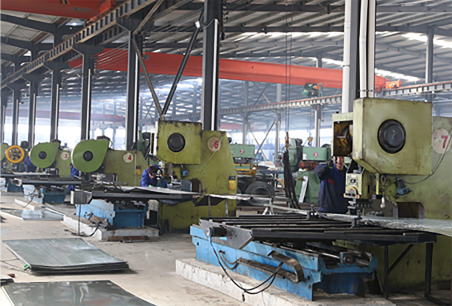Perforated Sheet Cladding A Fusion of Design and Functionality
In contemporary architecture, the use of perforated sheet cladding has gained significant traction due to its unique ability to marry aesthetics with practicality. This innovative building material consists of sheets of metal, plastic, or other materials that have been punctured with a variety of hole patterns. The versatility of perforated sheet cladding allows architects and designers to explore various design possibilities while offering numerous functional benefits.
One of the primary advantages of using perforated sheet cladding is its capacity for light modulation. The perforations allow sunlight to filter through while providing shade and reducing glare, creating a more comfortable indoor environment. This feature not only enhances the aesthetic appeal of a building but also promotes energy efficiency by limiting the reliance on artificial lighting during the day. In addition to natural light, perforated cladding can also contribute to ventilation, allowing air to flow through the material and improving thermal comfort.
From an aesthetic standpoint, perforated sheet cladding offers a modern and sophisticated look. The patterns created by the perforations can be customized to suit the architectural style of any building, from contemporary urban structures to more traditional designs. This adaptability allows for creativity in facade design, enabling architects to create striking visuals that can reflect the identity and purpose of the building. The interplay of light and shadow generated by the perforations can add a dynamic element to the structure, making it visually engaging.
perforated sheet cladding

Moreover, perforated sheet cladding is a sustainable option in the realm of building materials. Many manufacturers produce perforated sheets from recycled metals, and their durability ensures a long lifespan, reducing the need for frequent replacements. Additionally, the ability of perforated cladding to integrate with other materials and systems, such as green walls or solar panels, further promotes a sustainable architectural approach.
The installation of perforated sheet cladding is also relatively straightforward, making it a cost-effective solution for many construction projects. Lightweight and customizable, these sheets can be tailored to fit various structural requirements and are compatible with different mounting systems. This ease of installation not only saves time but also minimizes labor costs, making it an appealing choice for both contractors and developers.
In conclusion, perforated sheet cladding represents a powerful fusion of design and functionality in modern architecture. Its ability to provide light control, enhance ventilation, and contribute to sustainability makes it an invaluable asset for contemporary buildings. As architects continue to push the boundaries of design, the use of perforated sheet cladding is likely to expand, offering innovative solutions that meet both aesthetic and environmental needs. Whether in commercial, residential, or institutional projects, this versatile material is well-poised to shape the future of architectural cladding.
-
The Strength and Versatility of Aluminum Expanded Metal Mesh
NewsJun.10,2025
-
Safety Guards and Machine Enclosures Using Expanded Mesh
NewsJun.10,2025
-
Performance with Round Hole Perforated Mesh in Wall Panels
NewsJun.10,2025
-
How Steel Grating Trench Covers Distribute Weight Efficiently
NewsJun.10,2025
-
How Deck Mesh Railing Enhances Backyard Aesthetics
NewsJun.10,2025
-
Comparing Bar Thickness and Spacing in Steel Grating
NewsJun.10,2025
Subscribe now!
Stay up to date with the latest on Fry Steeland industry news.

